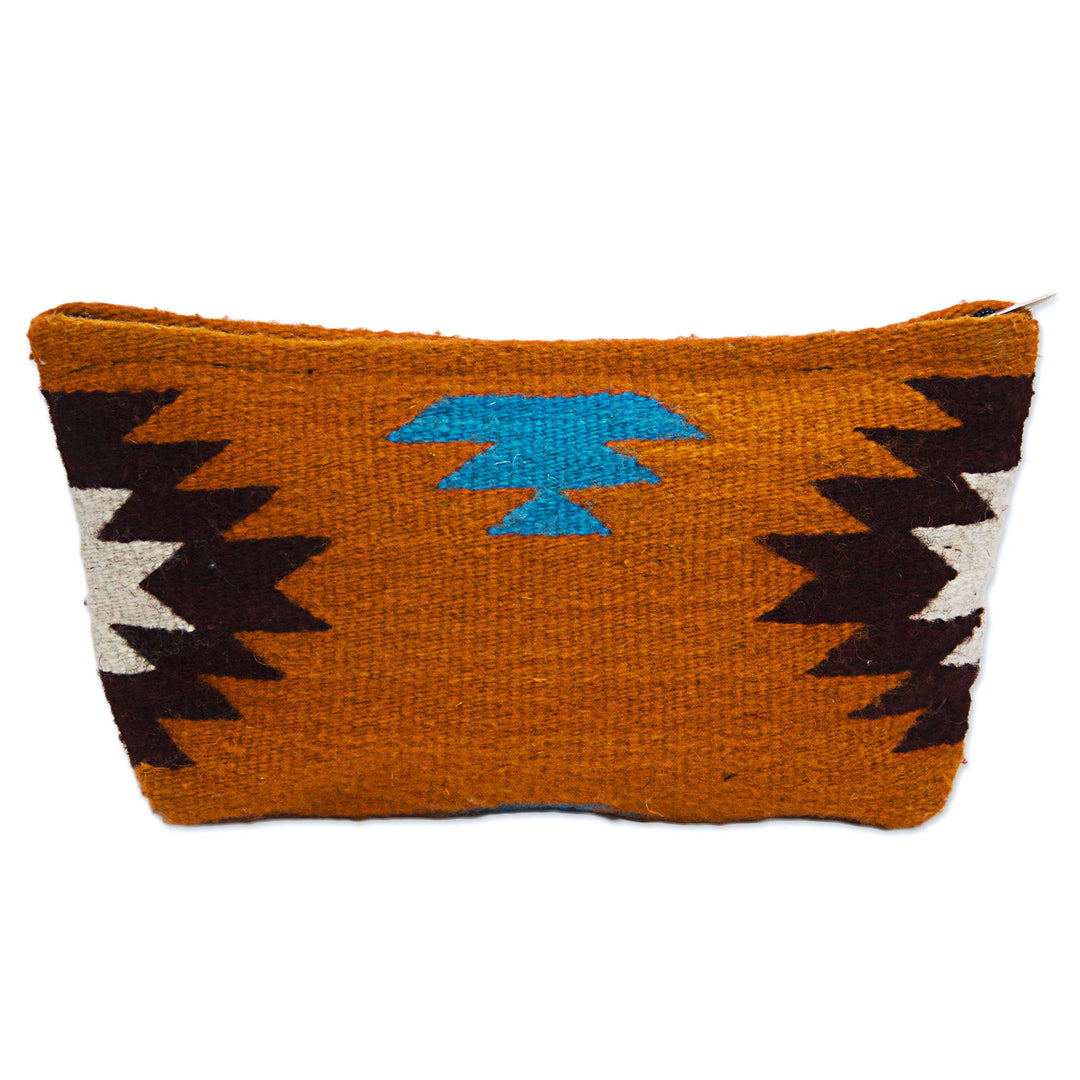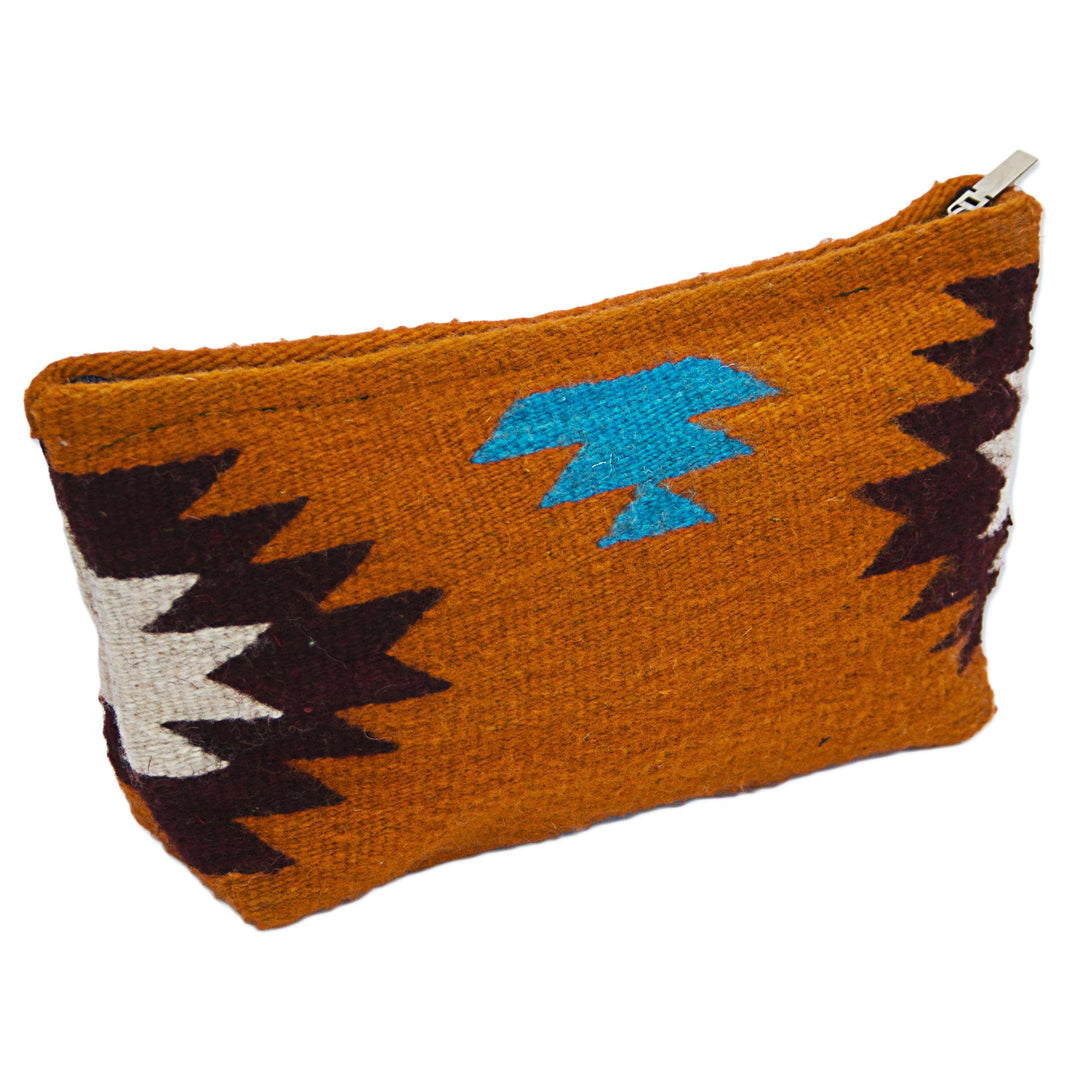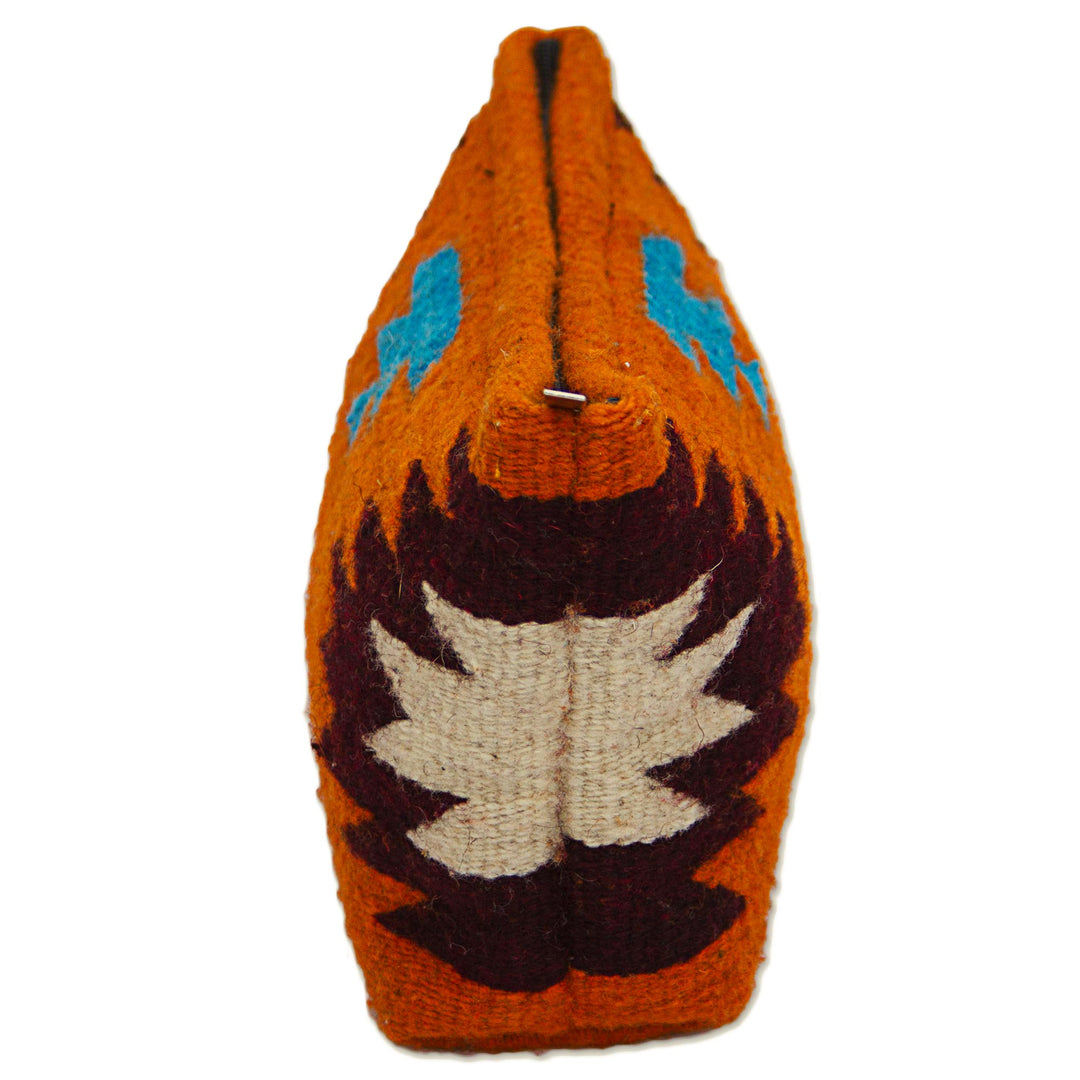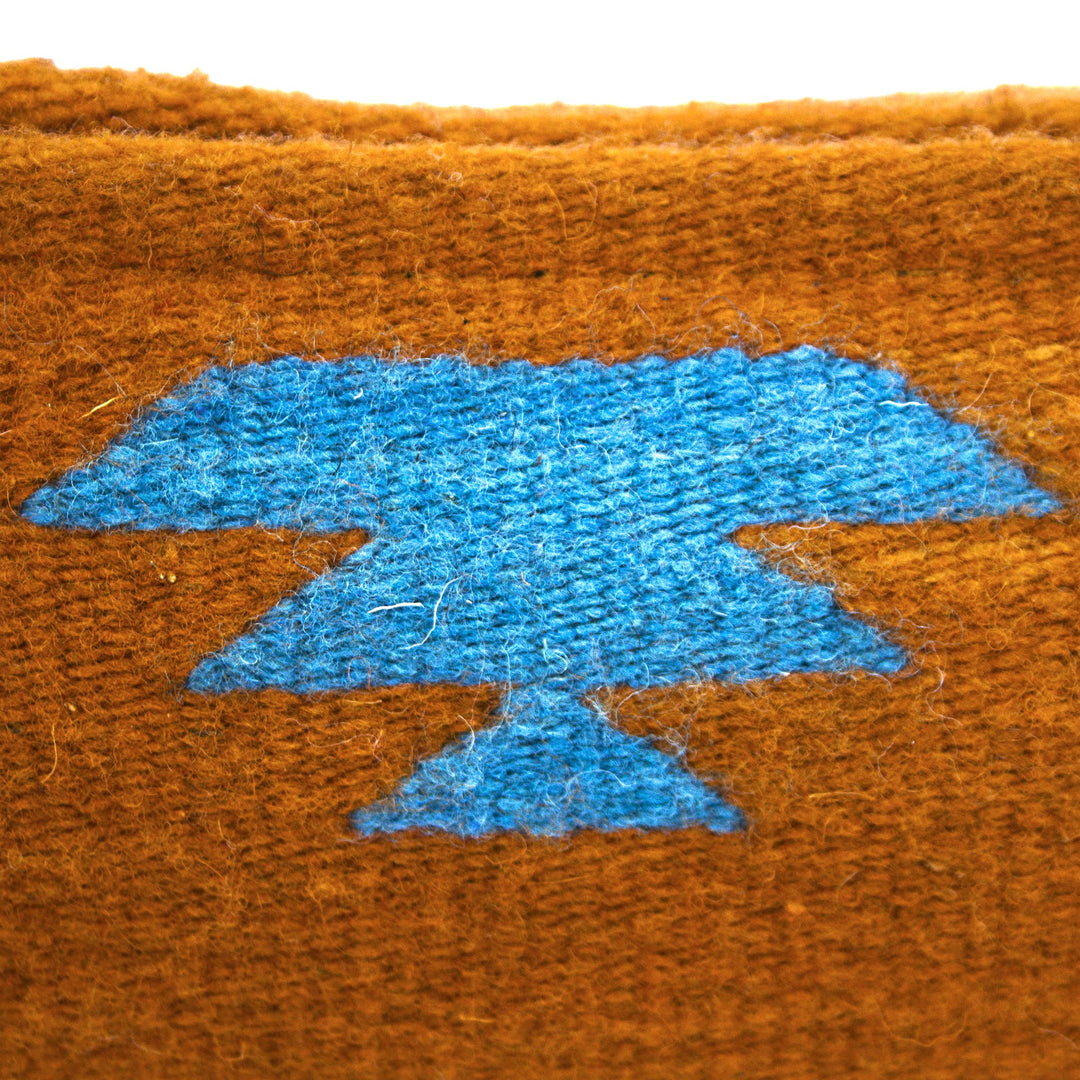

✓ Item added to cart
View Cart
Hand Made Wool Clutch Handbag Sunrise from Mexico - Autumn Sunrise
Learn more >
Sourced
Guarantee
Mexican artisan Marco Bautista finds a true passion in the act of weaving, a process that brings him closer to nature, reminding him of the relationship he shares with the animals and landscapes of his country. He creates this clutch handbag with a handwoven Zapotec design from 100% wool. He decorates the piece with geometric motifs in antique white, black, and Caribbean blue against a body of sunrise orange. The handbag opens with a zipper to reveal a polyester lining in black with an open side pocket.
- 100% wool. Polyester lining
- 0.18 lbs
- 6 inches H x 11.5 inches W x 2.8 inches D
THE STORY BEHIND THE PRODUCT
Artisan Organization: Marco Bautista
Country: Mexico
"I'm Marco Bautista from Oaxaca and I weave wool textiles on a traditional Zapotec loom. My friends say I'm an enthusiastic and extroverted person. I like to work as a team to solve problems.
"As a university student, I had to work to help my parents to pay for my education, and my best alternative was what I do well — weaving.
"I would leave at 5 a.m. every morning and take two buses to get to my 7 a.m. class and then return home around 3 p.m. to weave rugs until 8 p.m. On weekends, I would weave all day. Weaving became a big part of me because it helped pay for my education and I'm very proud to have learned this family art from my parents. It was a lovely time when I could combine my education with art.
"Traditional Zapotec weaving is an art that's been passed down from generation to generation. I learned from my parents, who learned from their parents who in turn, learned from their own parents. When I was eight years old, I started with the basics, which consisted of winding the threads on a bamboo spool. By 2006, I was able to weave small rugs.
"My technique continues to improve, although there is always something new to learn. I'd like to stay involved with the handcrafts my community creates, work on our processes and designs, and promote our work. I'd also like to teach others in the future.
"I've spent a lot of time to create the textiles I now weave, learning about the weavings and looms of other cultures through magazines and books. I apply that knowledge to improve my designs and techniques. Sharing this knowledge with others is a pleasure.
"We work with virgin wool known as churra, for its rustic textures. Wool is a challenging fiber to work with, as it is very fine and can break if it's too tense. We're very careful when we weave. Most of our dyes are natural, obtained from tree bark, leaves, flowers and plants.
"We use the tapestry technique on traditional floor looms, and I draw the geometric motifs directly onto the warp. I then fill them in with the horizontal, or weft, yarns. The flat or geometric figures are fun to weave but the concave or curved patterns are very difficult because you need to weave between the empty spaces where there is no warp thread to define the outline.
"I'm inspired by Oaxaca's pre-Hispanic Zapotec temples and archaeological sites. I'm also inspired by landscapes, stars, cloud formations, mountains, the colors on the horizon and animals. In addition, I sometimes create contemporary designs using our ancestral techniques.
"Making a career of this art is exciting and also challenging, as I work with family members and neighbors in my community. Creating designs, color schemes and dye samples takes time. I then create a sample for the weavers who collaborate with me to use as a model. We all work in a family setting.
"I highly value creativity and all of us contribute our own creative ideas to our designs.
"In recent years, many people from our town have given up weaving or have moved to the cities in search of a better life. My dream is to contribute to the preservation of this beautiful tradition, which is why I see my workshop as a way to create jobs in the community and my family. This, in turn, will benefit the wool providers, local shops, and the artisans ourselves, thus providing an incentive to perpetuate our ancestral textile skills.""





















